The Samuels Avenue neighborhood is one of Fort Worth’s most evocative. When the town first expanded out from the abandoned military fort, it expanded northeastward into the peninsula formed by a bend of the river, toward Traders Oak, where Henry Clay Daggett and Archibald Leonard had begun the town’s first business in 1849 and where the county’s first election had been held in 1850, toward the Cold Springs, a popular recreation area where in 1859 Sam Houston spoke to an Independence Day crowd. Later attractions were the driving park (see Part 2), where people went to ride and race and bet, and the pavilion (see Part 3), where people went to picnic and dance and be entertained.
Also on Samuels Avenue is aptly named Pioneers Rest, the town’s first cemetery, a who’s who of local history: Buried therein are Major Ripley Arnold, General Edward H. Tarrant, General James J. Byrne, Captain Ephraim Merrell Daggett, Captain Charles Turner, Colonel Abe Harris, Josephine H. Ryan, Roger Tandy, Jesse Zane-Cetti, Carroll Peak, and Lemuel Edwards.
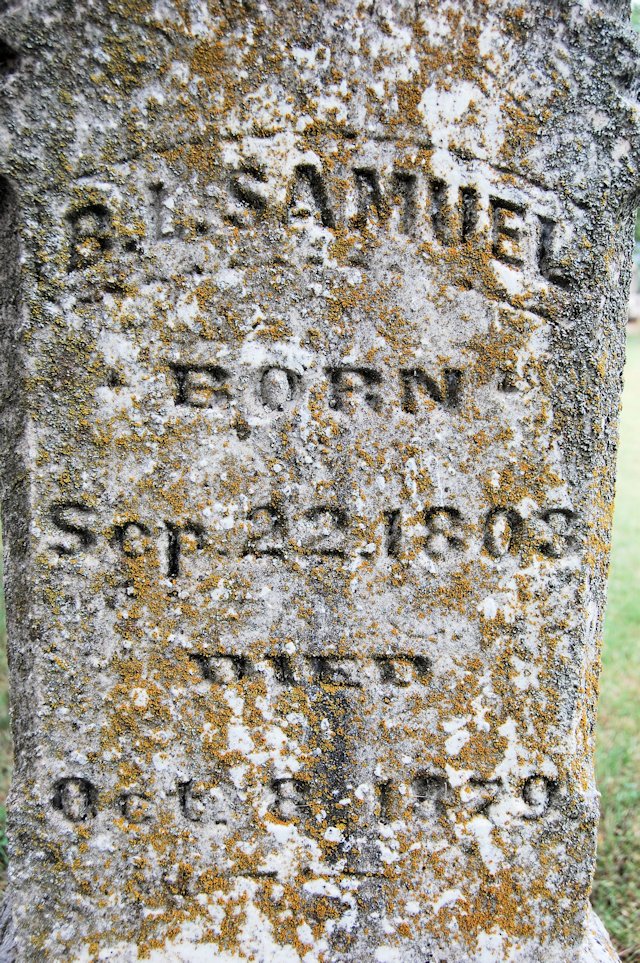
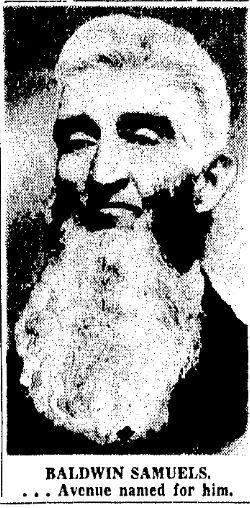 Baldwin L. Samuel, born in Kentucky on September 22, 1803, also is buried in Pioneers Rest (he donated land for the cemetery’s enlargement).
Baldwin L. Samuel, born in Kentucky on September 22, 1803, also is buried in Pioneers Rest (he donated land for the cemetery’s enlargement).
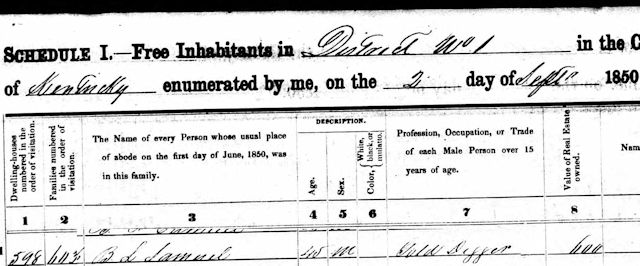
Baldwin L. Samuel was listed in the 1850 Todd County, Kentucky census as a “gold digger.”
 By about 1857 Baldwin Samuel was in Fort Worth because in 1869 he told a Tarrant County voter registration canvasser that he had been in the precinct twelve years. Samuel bought the Terry plantation near Traders Oak about 1870.
By about 1857 Baldwin Samuel was in Fort Worth because in 1869 he told a Tarrant County voter registration canvasser that he had been in the precinct twelve years. Samuel bought the Terry plantation near Traders Oak about 1870.
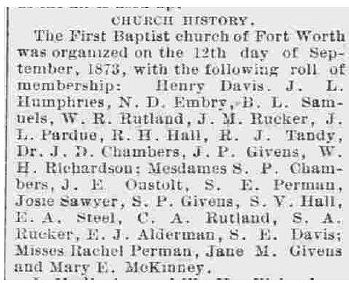 Samuel, like Roger Tandy, was a charter member of the First Baptist Church.
Samuel, like Roger Tandy, was a charter member of the First Baptist Church.
After Samuel died in 1879, the road from his plantation to downtown came to bear his name. Samuels Avenue runs along a bluff and still has the same grand view over the river that Ripley Arnold saw in 1849 and that Baldwin Samuel saw about 1857.
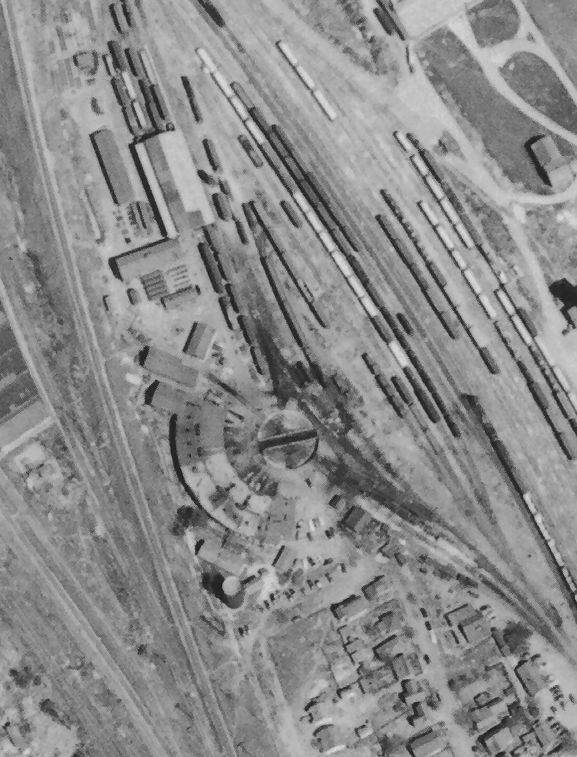 During the neighborhood’s long history it has hosted the fine houses of the wealthy and the shotgun houses and other modest homes of laborers, such as residents of the Rock Island neighborhood east of Samuels Avenue, where the railroad’s switchyard was located.
During the neighborhood’s long history it has hosted the fine houses of the wealthy and the shotgun houses and other modest homes of laborers, such as residents of the Rock Island neighborhood east of Samuels Avenue, where the railroad’s switchyard was located.
The Samuels Avenue neighborhood still has a few houses from the nineteenth century, but time, fire, neglect, and development have claimed most of the oldest houses.
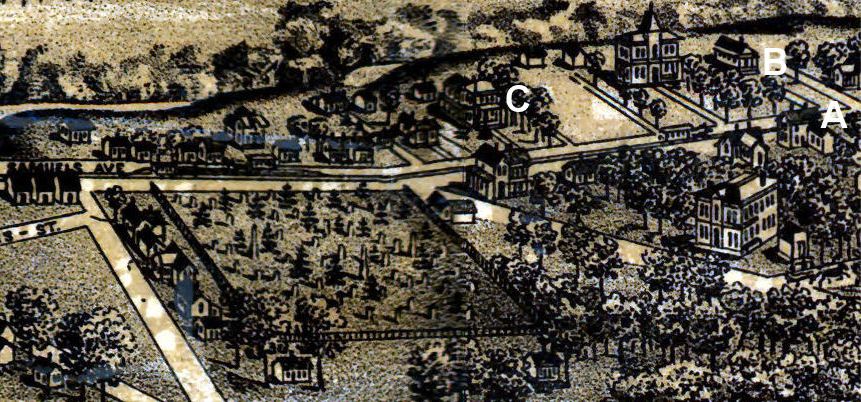 This is a bird’s-eye-view map of the Samuels Avenue neighborhood published in 1886. You can see the square of Pioneers Rest Cemetery. That’s Samuels Avenue running east to west across the top of the cemetery; Cold Springs Road runs at a four o’clock angle. Believe it or not, the three houses marked A, B, and C are still standing.
This is a bird’s-eye-view map of the Samuels Avenue neighborhood published in 1886. You can see the square of Pioneers Rest Cemetery. That’s Samuels Avenue running east to west across the top of the cemetery; Cold Springs Road runs at a four o’clock angle. Believe it or not, the three houses marked A, B, and C are still standing.
Here are the three today:
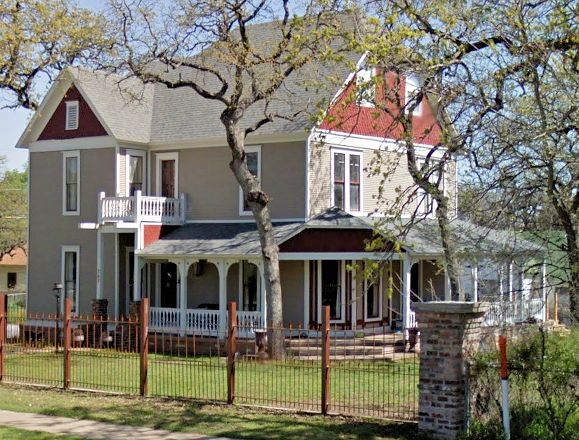 A is the Getzendaner house (1880s). John Getzendaner is listed in the 1885 city directory as a stockman. The house has been renovated.
A is the Getzendaner house (1880s). John Getzendaner is listed in the 1885 city directory as a stockman. The house has been renovated.
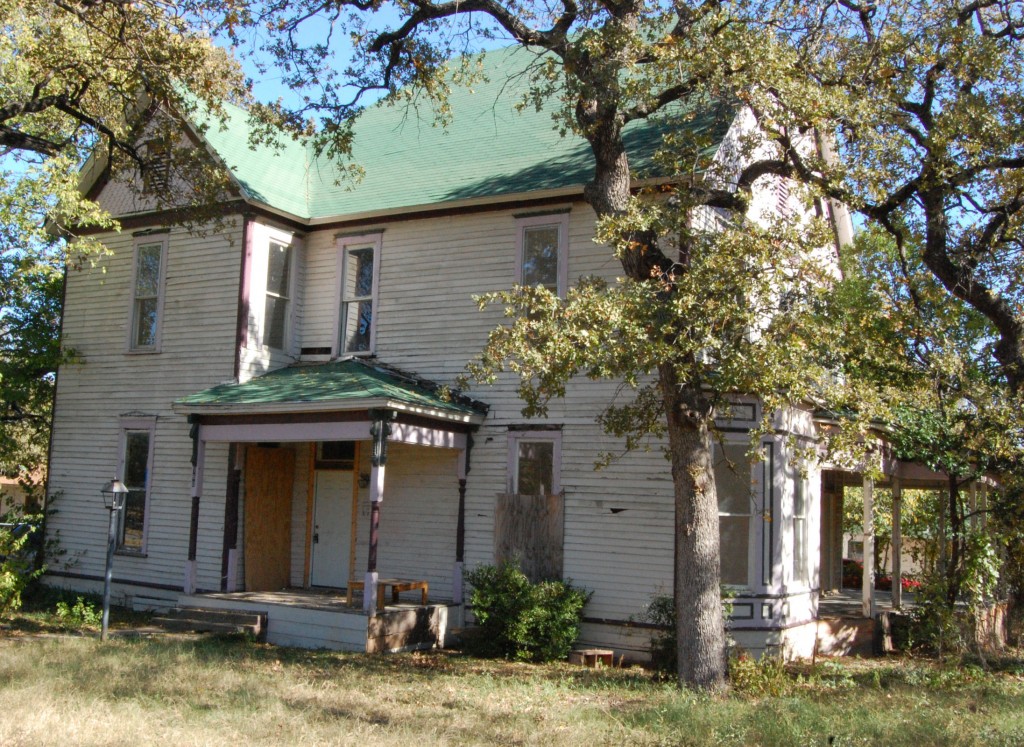 Before renovation.
Before renovation.
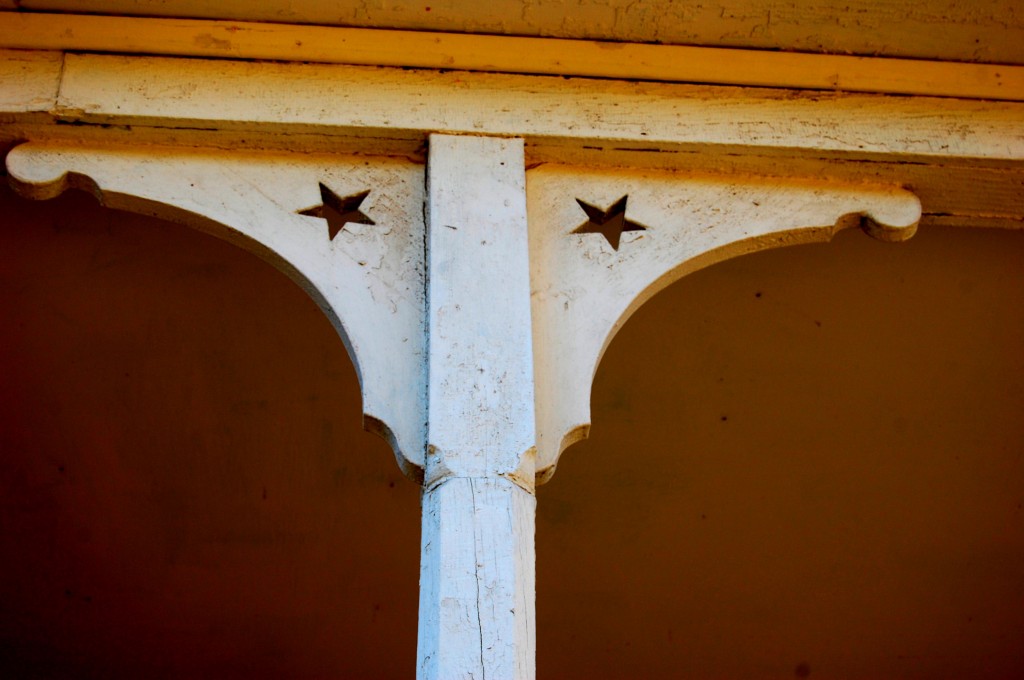 A column brace of the back porch of the Getzendaner house.
A column brace of the back porch of the Getzendaner house.
 Eave brackets of Getzendaner house before renovation.
Eave brackets of Getzendaner house before renovation.
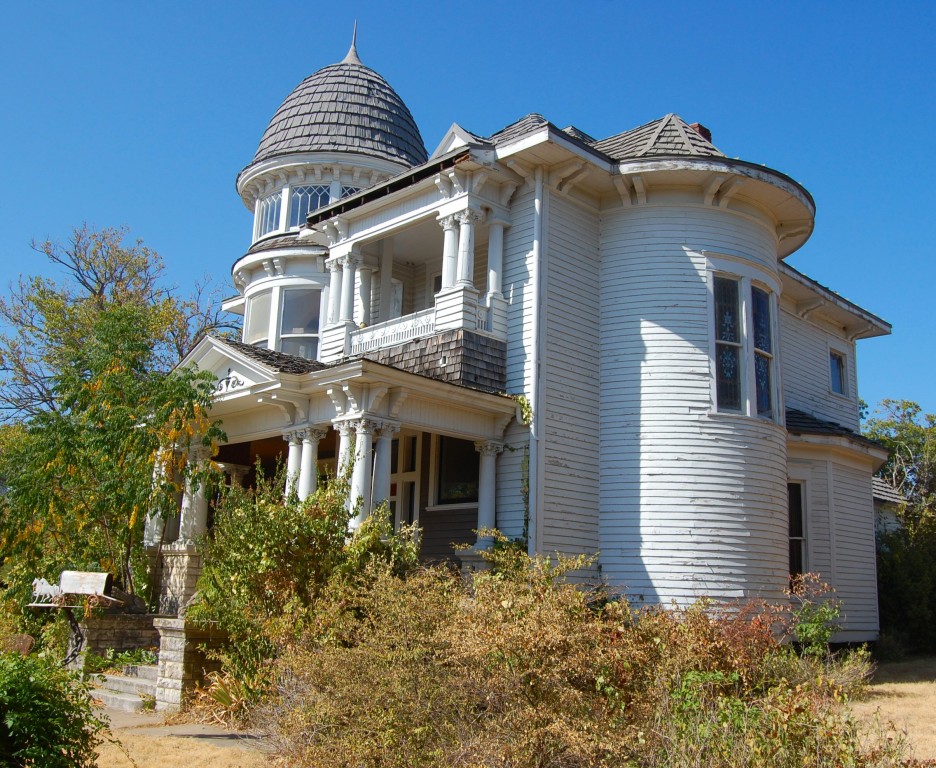 B became the rear part of today’s Garvey house (1890s). The front part of the house was added after the 1886 map was drawn. William Garvey was listed in the 1885 city directory as a sand dealer. The Garvey house has a new owner and is being renovated.
B became the rear part of today’s Garvey house (1890s). The front part of the house was added after the 1886 map was drawn. William Garvey was listed in the 1885 city directory as a sand dealer. The Garvey house has a new owner and is being renovated.
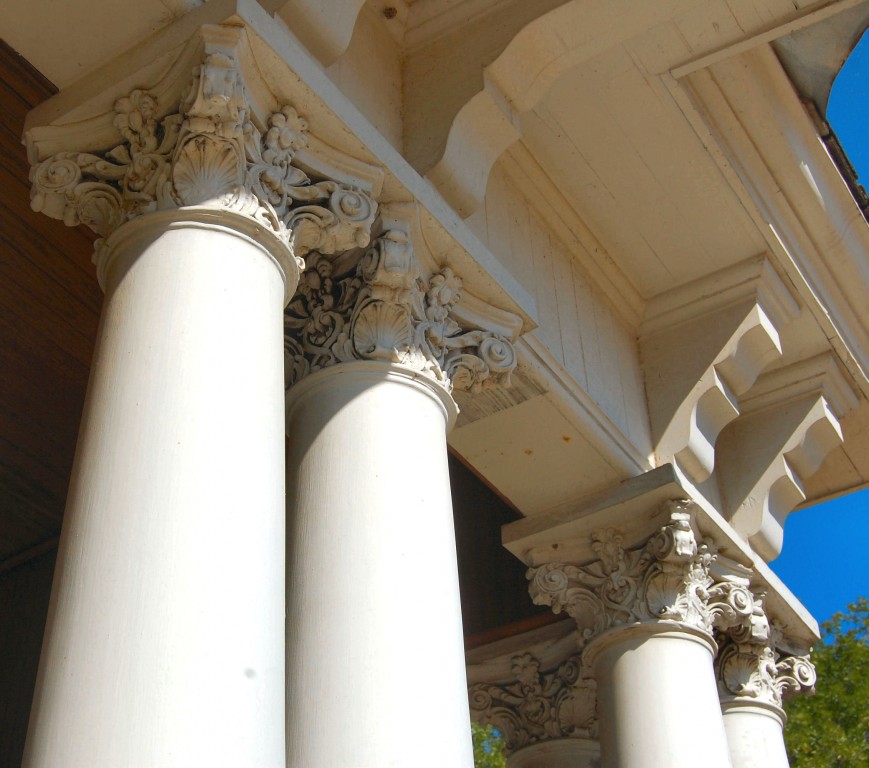 Columns and capitals of the Garvey house before renovation.
Columns and capitals of the Garvey house before renovation.
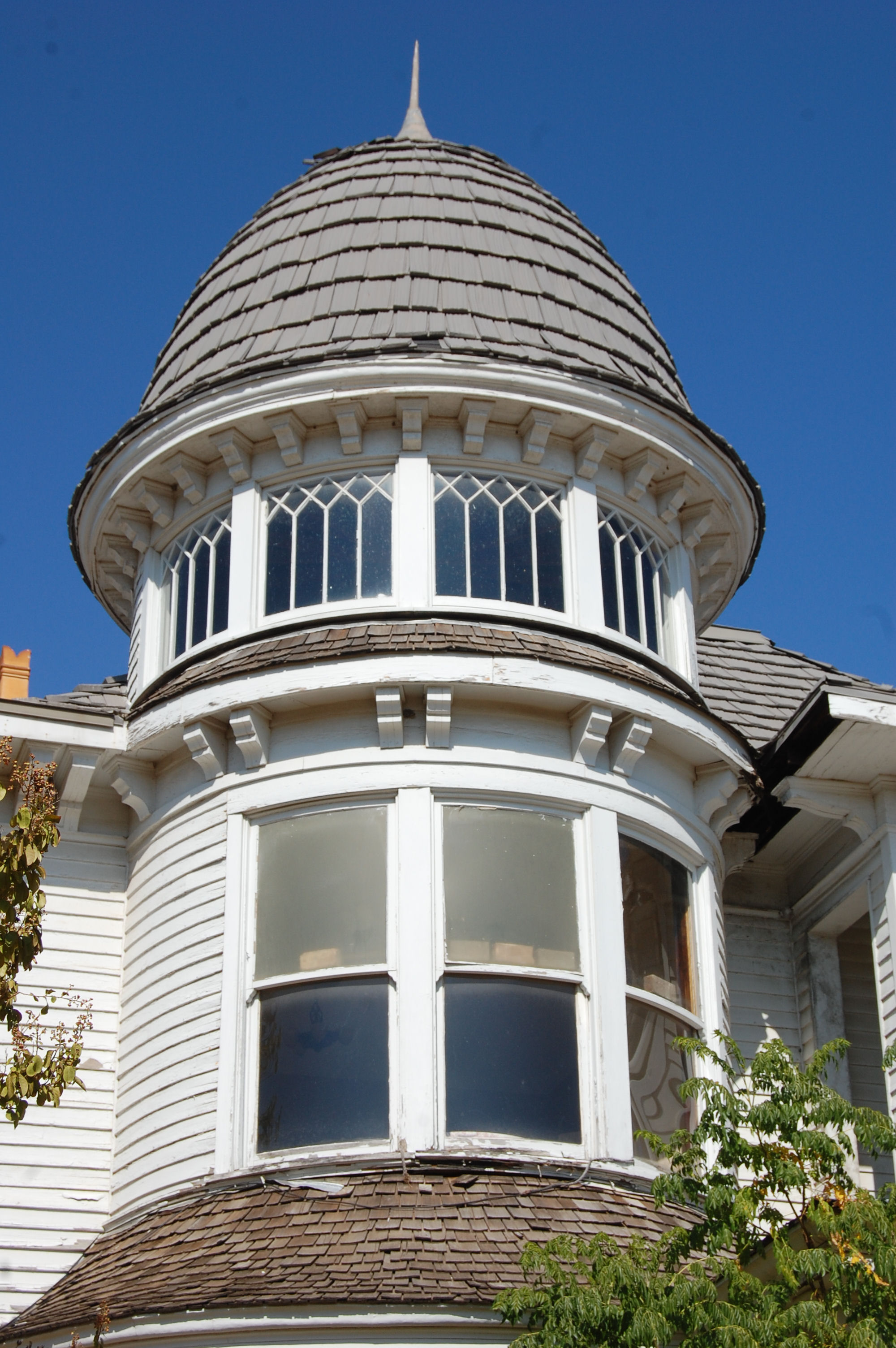 Garvey house turret.
Garvey house turret.
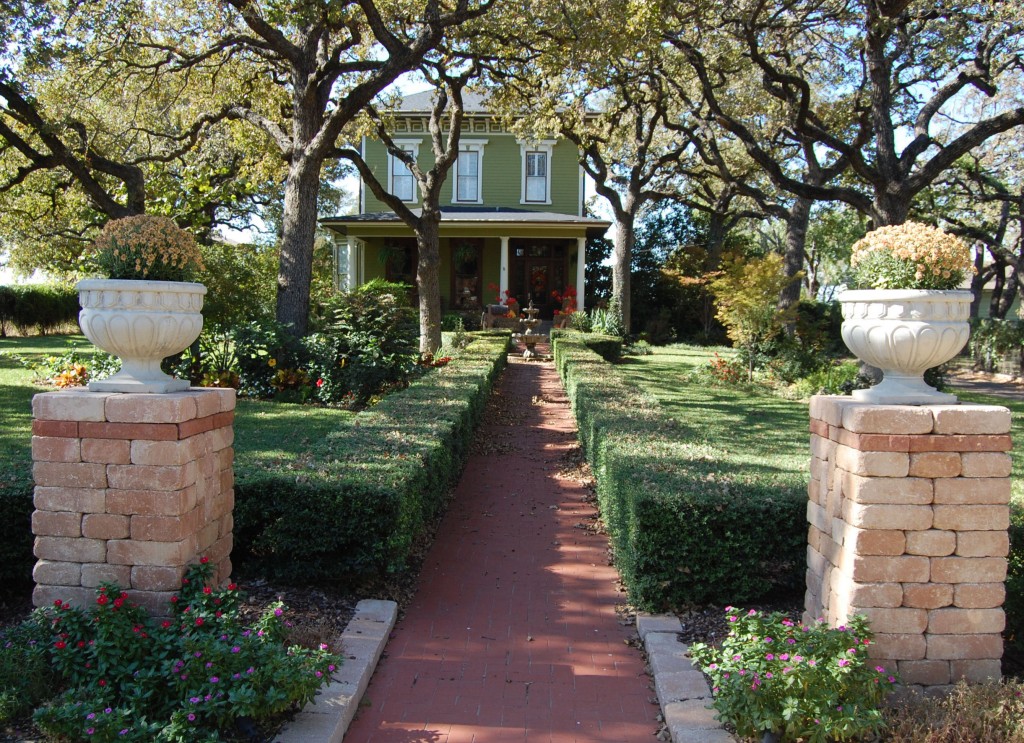 C is the Bennett house (circa 1875), perhaps the oldest house in town still in its original location. David Chapman Bennett was listed in the 1877 city directory as a vice president of Martin Bottom Loyd’s First National Bank. The Bennett house is wonderfully preserved.
C is the Bennett house (circa 1875), perhaps the oldest house in town still in its original location. David Chapman Bennett was listed in the 1877 city directory as a vice president of Martin Bottom Loyd’s First National Bank. The Bennett house is wonderfully preserved.
These three houses survive into their third century in Fort Worth’s first neighborhood, where they share Samuels Avenue with now-vacant lots whose steps lead to nowhere:
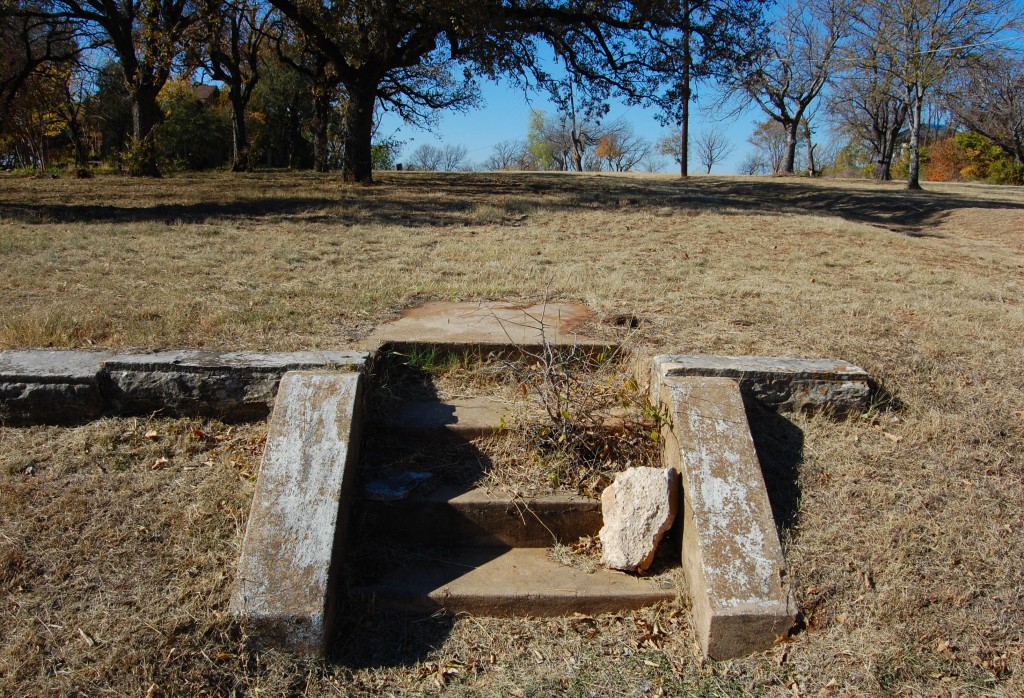 These steps once led to the grand Foster-Hodgson-Pool house overlooking the river (built in 1882, demolished in 2003). On the map the house can be seen between B and C. (Pool family members who lived here included D. McRae Elementary School teacher Alma Pool.)
These steps once led to the grand Foster-Hodgson-Pool house overlooking the river (built in 1882, demolished in 2003). On the map the house can be seen between B and C. (Pool family members who lived here included D. McRae Elementary School teacher Alma Pool.)
(Thanks to Samuels Avenue resident, historian, and preservationist John Shiflet for his help.)






I’m a direct descendent of Sam Woody Jr. , brother of Jane Woody Farmer (Husband Press) and so treasure the history you share about their being the first homeowners in Fort Worth. Thank you ever so much.
Thank you. The Woodys and Farmers were sure-nuff from-the-git-goers in Tarrant and Wise counties.
This is great. Thank you. I met John Shiflet and his wife during demolition of the Rominger house (my great grand father)
Thank you. The Shiflets have been strong supporters of preservation in Fort Worth. And it hasn’t been easy for them to watch their own historic neighborhood change.
Thank you. My great grandparents lived at 906 Samuels Ave. W.O. Rominger. Sadly the house was not spared demolition but we have pictures, mementos and memories. This is awesome.
W. O. Rominger! Yet more proof that Samuels Avenue was the Elizabeth Boulevard of its time. I photographed the Rominger ghost sign at the horse and mule barns the other day for this post.
Sandra-
I’m one of the owners of the David Bennett Chapman house on Samuels Ave.
The Garvey House is currently part of a large condo/apartment complex that is going through approvals. The developer plans to fully restore the Garvey House and use it as a clubhouse/office for the complex, maintaining its front view of Samuels Avenue with the units surrounding the Garvey House. It would be better if the home could be restored for family use, but we’re glad it will be fully restored none the less.
Thanks, Dave. You have a rare piece of Fort Worth history. John Shiflet has kept me up to date on the changes coming to that area. I hope for the best for the people and property affected.
Great article!
I own 760 Samuels, the Getzendaner house. It’s changed more since your picture.
If you’d ever like a tour, please let me know:)
I’m sure I could get you inside all 3 of the houses, as I’m friends with the owners of the Bennett house and represented the buyer that now owns the Garvey house.
Gwen Harper
Gwen, thanks for restoring the Getzendaner-Harper house and preserving some of Samuels Avenue’s grand past.
First and foremost thank you for saving Fort Worth’s History!! Not everyone can see the value in restoring these beautiful homes. That being said, you have a true gem there. Being an architecture student (born and raised in Ft. Worth) I certainly have a deep appreciation for the once vernacular architecture of the area. If it is not too much trouble, I would love a tour; even simply looking at original exterior fixtures up close. Nevertheless, thank you for restoring the house. Amazing!
Hi Gwen,
You stated that you represented the buyer for the Garvey house. I just saw it today and it is truly a remarkable house but has yet been renovated. Do you know what the new owners intentions are with this house? It’s so sad to see such a beautiful historical home go to waste.
Thanks again Mike. I spent a little time there a few months ago. Looking back, I do not know why I did not linger longer. I liked the Bennett house the best. Maybe someday they will be writing about the “Garza” house here in a mobile home park in North Richland Hills.
Someday years in the future a tour guide will say to the passengers on her tour bus: “And if you look out the coach on your left you will see the haunted Garza house. They say that the resident boarded a TRE train bound for Dallas in 2015 and was never seen again. That was seventy-five years ago. In the front window of the house you can see his cat Chico, still waiting for his master’s return.
It will always be called ROCK ISLAND. Great article.
Thanks, Juan.
I grew up off of Samuels ave as did alot of my family. I always have loved history and I must say thank you for this article. We have always called the neighborhood ROCK ISLAND. My parents were manager’s of the teen center on Samuels ave in the late 60s early 70s.
Thanks, Ken. I still see the “Rock Island” label on some maps. More of Cowtown’s railroad legacy. Fascinating part of town.
Mike,
Thank you so very much for an outstanding writeup about the cradle of Fort Worth’s history. There have been quite a few published articles about Samuels Avenue over the decades but yours is among the very best. I hope this story will help raise awareness among Fort Worthians about the importance of saving the early history still remaining in this oldest of Fort Worth neighborhoods. Samuels Avenue tells us the history of Fort Worth evolving from a isolated tiny army outpost, to becoming a town, and then successfully growing into a city. If this article leads anyone to take an interest in the neighborhood it will have helped to preserve this unique part of our community history. Thanks again for telling a remarkable story in such a fascinating way.
And thank you, John, for your research and advocacy.
Those steps are SO sad…
If you look at a sequence of aerial photos of that area over fifty years, the area goes from thick with houses to thick with condos and empty lots. I have lived in apartments myself, and no doubt something had to be torn down to build them, but still . . .